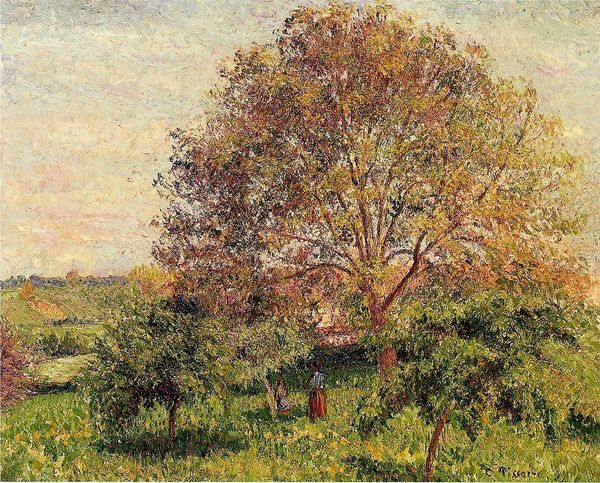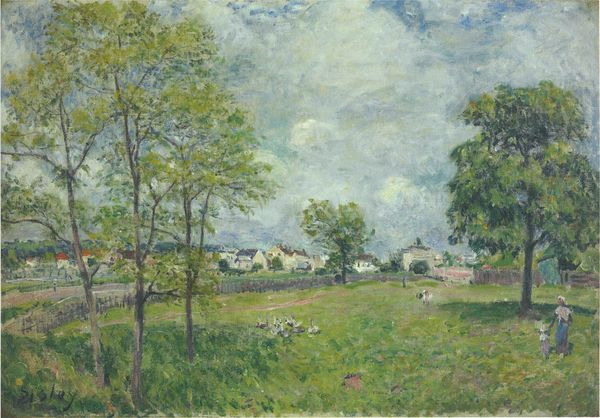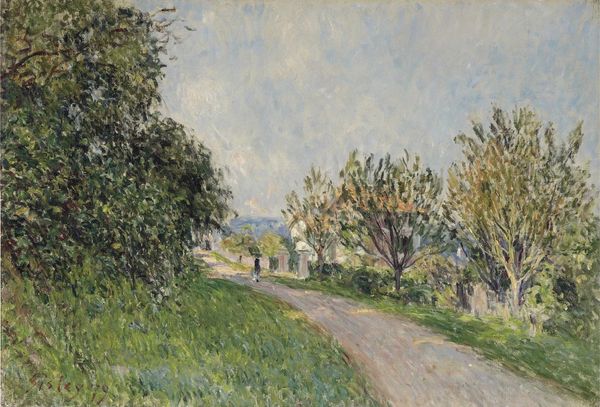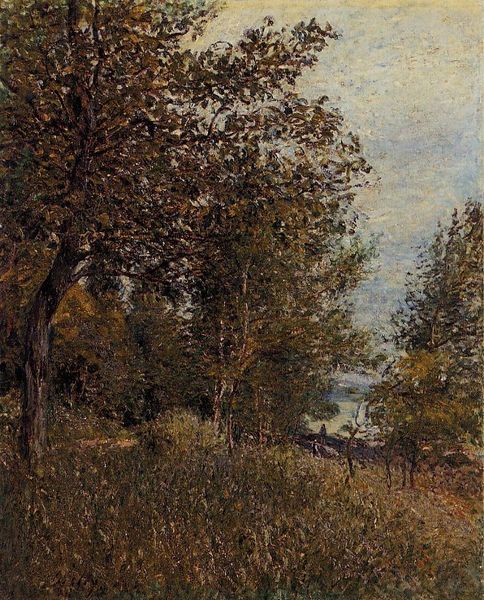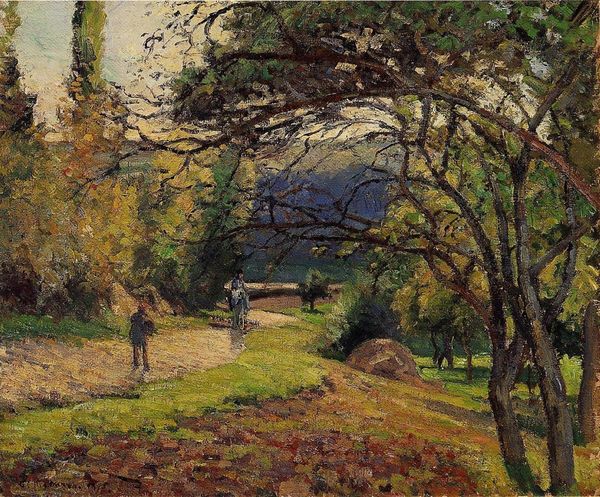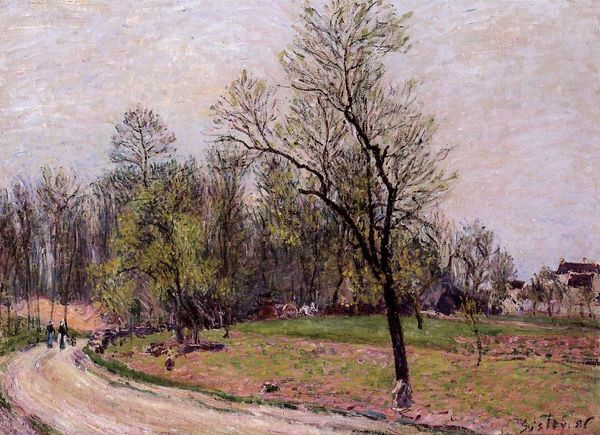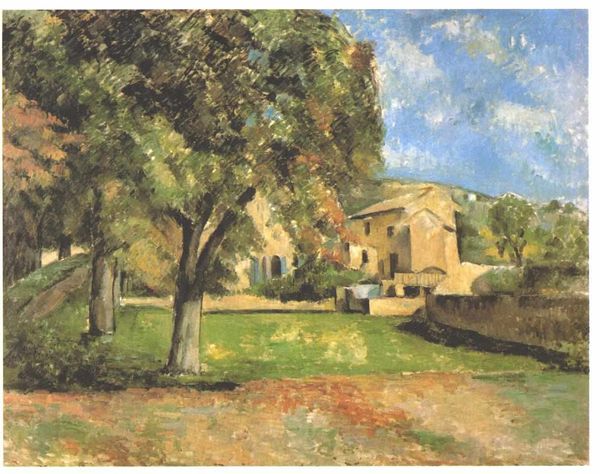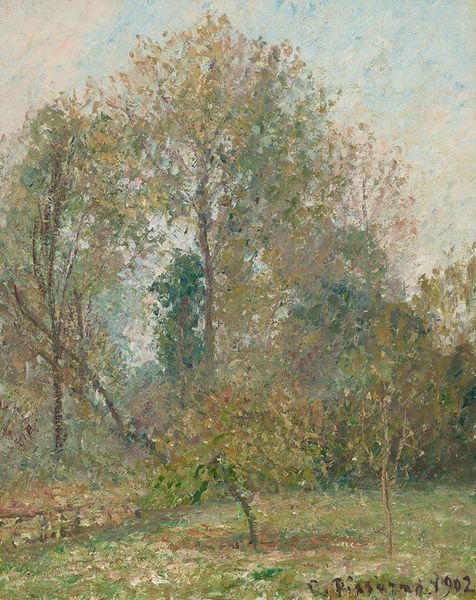
painting, plein-air, oil-paint, fresco
#
painting
#
impressionism
#
plein-air
#
oil-paint
#
landscape
#
fresco
#
post-impressionism
Copyright: Public Domain: Artvee
Editor: So, this is Camille Pissarro's "Chestnut Trees in Osny" from 1883. Painted with oils, I'm immediately drawn to its serene and pastoral feel, but I wonder, given Pissarro’s later development, what it tells us about the art world and social context in which he created it. How would you interpret this piece, considering its time and place? Curator: It's a seemingly straightforward landscape, isn't it? But look closer. Painted during the height of Impressionism, we need to see this through the lens of rapidly changing social structures and urban expansion impacting the French countryside. How does Pissarro engage with those changing social dynamics? Editor: He definitely emphasizes nature, almost as if it’s resisting that change. The buildings in the background are small and indistinct compared to the dominating trees. Is he making a statement about the importance of preserving the rural landscape? Curator: Exactly. Remember, Pissarro wasn't just an artist; he was an anarchist. He saw the value in rural communal life, contrasting it sharply with the industrializing cities. Consider how his paintings like this, with their emphasis on the peasantry and untouched landscapes, serve as a silent commentary. Where would these paintings have been exhibited and by whom would they have been collected? Editor: Probably in private galleries, enjoyed by a bourgeoisie also escaping the city... perhaps unconsciously wrestling with the transformations they were enacting. Curator: Precisely. There’s a tension here. This artwork functions within a market driven by the societal shifts it subtly critiques. Considering the Impressionist movement was itself a kind of rebellion against the Salon system, you can see how even "peaceful" landscapes engage with cultural politics. Editor: That’s fascinating. It's like the painting is having a conversation with the very society it depicts, or wishes to depict. I hadn't thought about it in terms of anarchist ideals and their subtle resistance. Curator: Art always exists within a complex web of socio-political forces. I hope you see how studying those dynamics adds layers of meaning. Editor: I certainly do! Thanks to this painting, I will explore further this connection of art, politics, and the context in which they both appear.
Comments
No comments
Be the first to comment and join the conversation on the ultimate creative platform.
